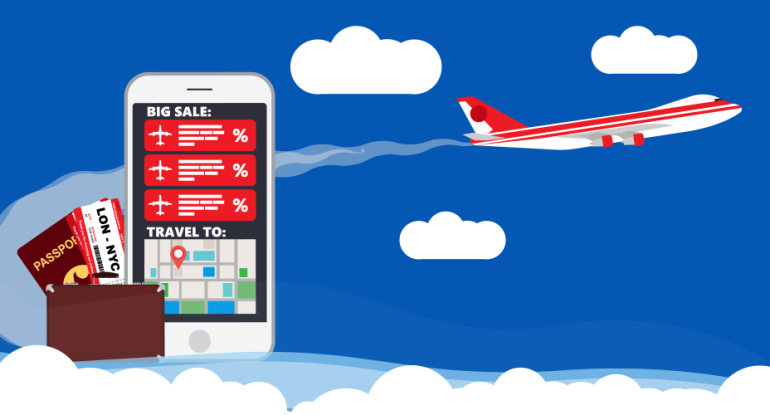Introduction
In today’s digital age, the travel industry has witnessed a significant transformation with the rise of travel web applications. These applications make planning, booking, and experiencing trips more convenient for travellers. If you want to develop a travel web application, you’re in the right place. This article will guide you through the essential steps and considerations in creating a successful travel web application.
Define Your Concept and Target Audience
Before you dive into the development process, you need a clear concept for your travel web application. Consider the following questions:
- What type of travellers are you targeting (e.g., leisure, business, adventure)?
- What unique features or services will your application provide?
- What will set your application apart from existing travel platforms? Understanding your concept and target audience is crucial for crafting a compelling value proposition and ensuring your app meets the specific needs of your users.
- Market Research
Market research is essential to understand the competitive landscape and customer preferences. Analyze existing travel apps and identify their strengths and weaknesses. Pay attention to user reviews and feedback to learn from their experiences. Additionally, research industry trends and stay updated on the latest technologies that can enhance your application.
Choose the Right Technology Stack
Selecting the appropriate technology stack is a fundamental decision. Consider the following factors:
- Frontend Frameworks: Choose from popular options like React, Angular, or Vue.js.
- Backend Development: Options include Node.js, Ruby on Rails, Python (Django or Flask), or PHP.
- Database: Decide between SQL (e.g., MySQL, PostgreSQL) and NoSQL (e.g., MongoDB).
- Hosting and Cloud Services: AWS, Azure, Google Cloud, or a PaaS like Heroku. Your technology stack should align with your project’s requirements, scalability, and development team’s expertise.
- Wireframing and Design
- Create wireframes and prototypes to visualize the user interface and user experience (UI/UX). A user-friendly design is vital for travel applications. Use tools like Sketch, Figma, or Adobe XD to create interactive prototypes. Ensure that your design is responsive and optimized for mobile devices, as many users will access your app on smartphones and tablets.
- Development
This stage involves transforming your concept, design, and technology choices into a functional application. It’s essential to have a development team experienced in web application development. Collaborate with frontend and backend developers, UI/UX designers, and quality assurance testers to build your application. Use version control systems like Git to manage the development process and track changes.
Embarking on the journey of developing a travel web application requires a comprehensive guide to navigate the intricacies of design and functionality. From user-friendly interfaces to real-time updates, the key is to prioritize the needs of modern travelers. Incorporating features like seamless booking, interactive maps, and personalized itineraries enhances the user experience. However, the true measure of success lies in collecting customer feedback. By actively seeking and incorporating user insights, developers can refine the application, ensuring it aligns with the evolving preferences of travelers. This iterative process of feedback collection becomes instrumental in crafting a travel web application that not only meets but exceeds user expectations, fostering sustained engagement and loyalty.
Core Features
A travel web application should include essential features such as:
- User Registration and Authentication: Users should be able to create accounts and log in securely.
- Search and Booking: Enable users to search for flights, accommodations, and activities and make reservations.
- Payment Gateway: Integrate secure payment methods like Faster Payments for booking and transactions.
- User Profile: Allow users to manage their profiles, preferences, and bookings.
- Reviews and Ratings: Incorporate user-generated reviews and ratings for destinations and services.
- Notifications: Send real-time updates and reminders about bookings and travel plans.
- API Integration
To provide comprehensive travel information, integrate third-party APIs for services like flight booking, hotel reservations, and local activities. Ensure that these integrations are reliable and up-to-date to offer accurate information to users.
Testing and Quality Assurance
Thorough testing is crucial to identify and fix any bugs or issues. Conduct testing on multiple devices and browsers to ensure compatibility. Perform usability testing to validate the user experience. Continuous testing and feedback from real users can help improve your application’s performance and usability.
- Security
- Security is paramount in travel applications due to the sensitive user data involved. Implement robust security measures to protect user information and transactions. Use HTTPS, encryption, and best practices for data protection.
- Scalability
Consider the potential for rapid growth. Ensure that your application can handle increased traffic and user demands. Scalability is essential to provide a seamless experience, especially during peak travel seasons.
User Feedback and Iteration
Once your travel web application is live, gather feedback from users. Continuous improvement is key to success. Address user concerns, fix issues, and add new features based on user suggestions. Regular updates will keep your application relevant and competitive.
Marketing and Promotion
To attract users, invest in marketing and promotion. Utilize social media, content marketing, email campaigns, and partnerships with travel influencers or companies, use design tools, such as flyer design tools, video marketing tools and so on. Building a strong online presence and positive reviews can help your application gain visibility and trust. Also, consider the possibilities of automating marketing campaigns with the help of custom AI&ML services.
Conclusion
Developing a travel web application is a complex yet rewarding endeavour. By following the steps outlined in this guide, you can create a user-friendly, secure, and competitive travel application that meets the needs of your target audience. Remember that the travel industry is dynamic, so stay adaptable and responsive to user feedback and changing market trends. With the right concept, technology, and commitment to quality, your travel web application can become a valuable tool for travellers around the world.











